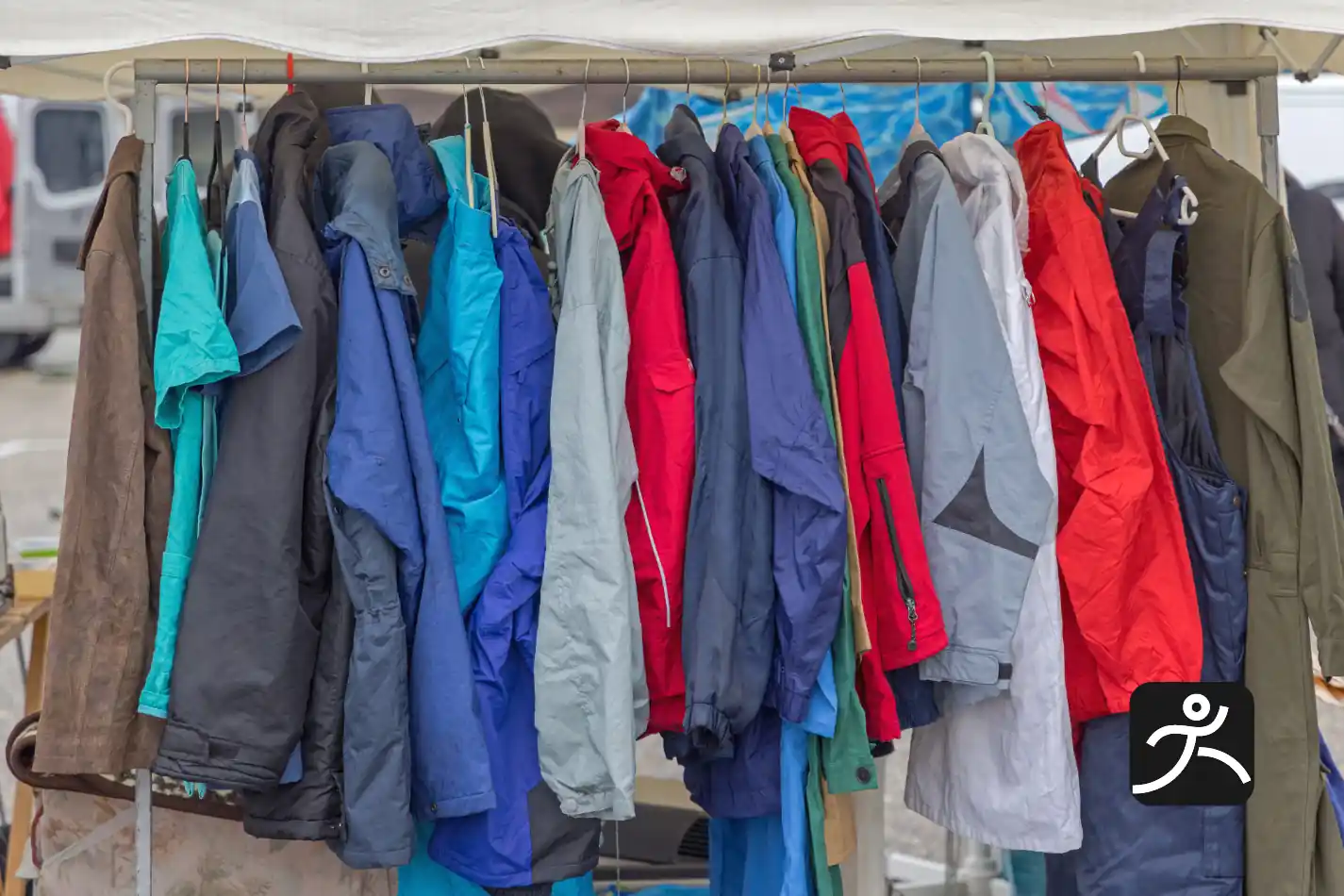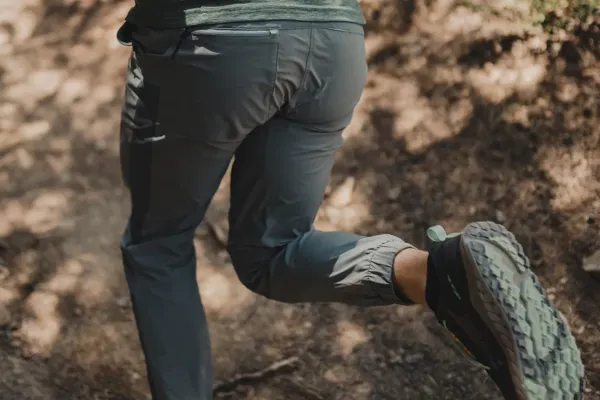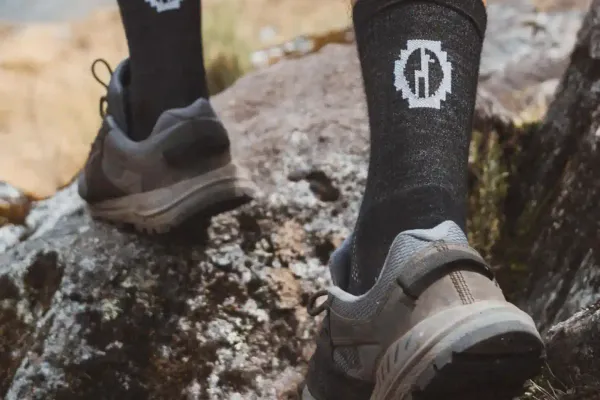Fastpacking Rain Jackets: Core Features for High-Intensity Adventure
Exploring the essential tips for choosing a rain jacket for fastpacking and achieve the perfect balance of waterproofing and breathability—what's the secret?

When you're selecting a rain jacket for fastpacking, you'll want to balance lightweight design with durability and waterproof breathability. Consider materials like ePTFE membranes or GORE-TEX fabric, which offer effective moisture management.
Features such as fully taped seams, adjustable hoods with visors, and pit zips can greatly enhance your comfort. It's also important to think about packability to save space in your gear.
But how do you strike the perfect balance between waterproofing and breathability for high-intensity activities? Let's explore the key factors that can make or break your fastpacking experience.
The Science of Waterproof Breathability in Fastpacking Gear
When selecting a rain jacket for fastpacking, it's vital to understand how waterproof breathability works to keep you comfortable and dry.
Waterproof breathability allows moisture vapor to escape while repelling water. Jackets with ePTFE membranes have microscopic pores that enable breathability, letting air and moisture pass through but blocking water.
Fastpacking jackets often feature multiple layers, including ePTFE membranes, to balance water repellency, breathability, and durability. DWR (Durable Water Repellent) coatings are also important, as they enhance the jacket's water resistance.
Layering techniques can further optimize breathability and durability. By understanding these elements, you can select a jacket that offers the right combination of waterproof protection and breathability for your fastpacking adventures.
Optimal Fabrics for Fastpacking Rain Protection
Understanding waterproof breathability is just one part of the equation; now, let's focus on choosing the right fabric for your fastpacking rain jacket.
For peak performance, consider a waterproof-breathable fabric like GORE-TEX, known for its effective moisture management and protection. Fabrics with ePTFE membranes offer superior breathability and durability, essential for high-intensity fastpacking. Look for jackets with a 3-layer construction to guarantee longevity and reliability in various conditions.
Lightweight options, such as Pertex Shield, are ideal due to their minimal weight and packability. Additionally, make sure your jacket has a DWR coating to enhance water resistance, essential for tackling variable weather during your fastpacking adventures.
Choosing the right fabric will greatly impact your comfort and performance.

Decoding Jacket Construction: 2.5-Layer vs 3-Layer Design
Evaluating jacket layers is essential to guarantee that your rain jacket meets the unique demands of fastpacking.
A 2.5-layer construction is your best bet, combining a waterproof and breathable membrane bonded to a face fabric with a protective layer. This setup ensures breathability and water resistance while keeping weight and packability in check.
The protective layer enhances durability, vital for the rigors of fastpacking. Unlike heavier 3-layer jackets, which might offer more durability, the 2.5-layer design strikes a balance between performance and weight.
Critical Features for High-Performance Fastpacking Jackets
To choose the perfect rain jacket for fastpacking, focus on key features like weight, breathability, and weather resistance. Look for an ultralight jacket weighing around 4-10 ounces. It should have a 2.5-layer construction for a good balance of weight and protection.
High Quality Rain Jackets Include:
Make sure it's waterproof with fully taped seams and a DWR coating to keep you dry. An adjustable hood is essential for a customizable fit. For added ventilation, pit zips are a great feature. Packability is important; the jacket should compress easily to save space.
Hood Design: Maximizing Protection and Visibility on the Trail
When selecting a rain jacket for fastpacking, the hood design is essential for staying dry and comfortable. Look for adjustable features like drawcords or Velcro tabs to fine-tune the fit, and a large visor to keep rain out of your face.
Additionally, stowable or detachable hoods add versatility by allowing you to reduce bulk when the hood isn't needed.
Fine-Tuning Your Fit: Adjustable Hood Technologies
A well-designed hood with adjustable features can make all the difference in keeping you dry and comfortable during a fastpacking adventure. Look for adjustable hood features like a large visor and fine-tuning options to guarantee maximum protection and visibility.
A snug fit is essential, and hood adjustments, such as drawcords and velcro tabs, allow you to customize the fit easily. Brims and stowable designs add versatility, letting you adapt to changing weather conditions.
Properly designed hoods prevent rain from entering and enhance overall waterproofing. With cinch cords and other adjustments, you can accommodate different head sizes and helmet compatibility. These features ensure your rain jacket performs well, keeping you focused on your fastpacking journey.
Brims and Visors: Enhancing Rain Protection and Visibility
Imagine you're on a fastpacking trail, and the rain suddenly starts pouring; a well-designed hood with a brim or visor can keep your face dry and your vision clear.
The hood design is vital for protection, as the brim or visor prevents water from dripping onto your face and glasses, enhancing comfort and visibility.
Adjustable hoods with brims or visors allow for better fit customization, ensuring ideal coverage during changing weather conditions. This added versatility shields you from glare, wind, and precipitation without obstructing your peripheral vision.
Stowable Hoods: Versatility for Changing Weather Conditions
While a hood with a brim or visor enhances visibility and protection, a stowable hood offers the added benefit of reducing bulk and weight when it's not needed.
Stowable hoods are perfect for fastpacking, providing convenience and versatility. They allow you to tuck the hood away into the collar or a dedicated compartment, making it easy to adapt to changing weather conditions. This design guarantees you maintain mobility and visibility while still receiving essential protection during rain or wind.
For fastpackers, the practicality of stowable hoods can't be overstated. They offer quick access and efficient storage, making them a valuable feature in selecting a rain jacket. The reduced bulk and weight enhance your overall fastpacking experience.

Mastering Moisture Management: Breathability and Ventilation
When choosing a rain jacket for fastpacking, you'll want to focus on breathability and ventilation to stay comfortable and dry. Look for jackets with high breathability ratings, like those using ePTFE membranes, and advanced ventilation features such as pit zips.
Additionally, consider jackets with moisture-wicking inner linings and strategic venting options, like mesh-lined pockets, to manage airflow and moisture efficiently.
Understanding Fabric Breathability Ratings for Fastpacking
To guarantee you stay dry and comfortable during fastpacking, understanding fabric breathability ratings is essential. These ratings measure how well a rain jacket allows moisture vapor to escape while keeping water out. Higher breathability ratings mean better moisture management, critical during fastpacking.
Look for jackets with advanced breathable fabrics for peak performance.
Here are three top choices:
- GORE-TEX Pro: Renowned for its superior breathability and durability.
- eVent: Offers excellent moisture management to keep you dry.
- Polartec NeoShell: Known for its balance of breathability and waterproofing.
Additionally, proper ventilation features such as pit zips and mesh liners can enhance the overall breathability of your rain jacket, making your fastpacking experience more comfortable.
Essential Ventilation Features for High-Intensity Activities
Effective ventilation features in a rain jacket can greatly enhance your comfort and performance during fastpacking adventures. Look for jackets with pit zips, which allow you to open vents under your arms for better airflow.
Breathable fabrics also play a vital role in managing moisture and preventing overheating. Good ventilation options, such as zippered vents or mesh-lined pockets, offer customizable airflow to suit your needs. These features help prevent condensation buildup inside the jacket, maintaining a comfortable microclimate as you move.
Strategic ventilation points are essential for enhancing breathability and overall performance. By choosing a rain jacket with these features, you'll promote better comfort and efficiency during your fastpacking activities.
Strategies for Optimal Moisture Control During Fastpacking
Proper moisture management in a rain jacket is essential for maintaining comfort and preventing overheating during fastpacking adventures. To achieve this, focus on two main aspects: breathability and ventilation.
Breathability allows sweat vapor to escape while keeping rain out, and proper ventilation helps regulate your body temperature during high-intensity activities.
Here are three tips to take into account:
- Look for ventilation features: Choose rain jackets with pit zips or mesh-lined pockets to enhance airflow.
- Balance breathability with waterproofing: Make sure the jacket allows sweat vapor to escape without compromising its waterproof capabilities.
- Consider the activity level: For high-intensity activities, prioritize jackets with excellent breathability to prevent moisture buildup and overheating.
Prolonging Your Gear's Life: Rain Jacket Maintenance Guide
Maintaining your rain jacket in top condition guarantees it stays waterproof and prepared for your next fastpacking adventure. Regular maintenance and care tips are essential.
Wash your rain jacket regularly with a mild detergent to uphold the fabric's integrity. Avoid fabric softeners or bleach, as they can degrade the waterproof properties. Periodically reapply a DWR coating to enhance water repellency. Inspect for wear and tear, focusing on taped seams and zippers.
After cleaning, hang your rain jacket to air dry instead of using a dryer to prevent damage.
| Task | Frequency |
|---|---|
| Wash with detergent | Regularly |
| Reapply DWR coating | Periodically |
| Inspect for damage | After each use |
| Air dry | Every time after washing |
Following these care tips makes sure your rain jacket stays ready for any fastpacking trip.
Waterproof Materials Showdown: Choosing the Best for Fastpacking
Now that your rain jacket is well-maintained, it's time to compare the best waterproof materials available for fastpacking.
Different membranes offer varying levels of waterproof and breathable performance:
- GORE-TEX: Known for its Pro, Active, and C-Knit options, GORE-TEX provides excellent waterproof and breathable properties, making it a popular choice for fastpacking.
- eVent: Utilizing ePTFE membranes, eVent jackets are highly breathable and keep you dry, ideal for active pursuits.
- Pertex Shield: This lightweight and breathable fabric is perfect for ultralight rain jackets, ensuring comfort during fastpacking adventures.
Understanding these materials helps you choose the right jacket, ensuring both waterproof protection and breathability for your fastpacking needs.
Balancing Act: Performance and Durability in Fastpacking Jackets
When considering performance and durability factors, you'll want to focus on waterproof-breathable technologies like GORE-TEX or eVent for best protection and comfort during fastpacking. Fully seam-taped jackets offer enhanced waterproofing and durability, ensuring you stay dry in wet conditions.
Additionally, prioritize jackets with excellent ventilation to help regulate your body temperature during high-intensity activities.
Advanced Waterproof/Breathable Technologies for Fastpacking
Often, selecting the right waterproof/breathable technology for your rain jacket comes down to balancing performance and durability factors. Technologies like GORE-TEX, eVent, and Polartec NeoShell offer varying levels of waterproof protection and breathability.
Seam taping plays a vital role in maintaining waterproof integrity, especially in fully seam-taped designs. Additionally, ventilation features like pit zips enhance breathability, making backcountry activities more comfortable.
Consider these aspects when choosing a rain jacket for fastpacking:
- Waterproof Protection: GORE-TEX provides robust waterproofing.
- Breathability: Polartec NeoShell and eVent offer superior breathability.
- Ventilation: Seek pit zips or mesh liners to enhance airflow.
Balancing these factors ensures you remain dry and comfortable during your adventures.
The Role of Seam Taping in Jacket Performance
Ensuring your rain jacket has fully taped seams is vital for peak waterproof performance and durability in wet conditions. Seam taping seals the seams to prevent moisture infiltration, which is essential for maintaining the jacket's waterproofing.
Fully taped seams offer superior protection compared to jackets with only critical seams taped, making them ideal for outdoor activities in the rain. This feature not only keeps you dry but also enhances the durability of your rain jacket.
Optimizing Comfort: Ventilation Strategies for Active Use
While fully taped seams guarantee waterproofing, effective ventilation and comfort are just as essential for a rain jacket designed for fastpacking. Without proper ventilation, moisture management becomes challenging, leading to discomfort and reduced performance. Look for features like pit zips, mesh-lined pockets, and back vents to enhance airflow.
Comfort is also key; consider the jacket's next-to-skin feel, stretchiness, and freedom of movement.
To make sure your rain jacket meets your fastpacking needs, focus on these three factors:
- Ventilation: Pit zips, mesh pockets, and back vents.
- Comfort: Soft inner lining, stretchy fabric, and ergonomic design.
- Durability: Thicker face fabric and robust seam construction.
Future of Fastpacking Gear: Market Trends and Eco-Innovations
The rain jacket market is witnessing significant innovations, such as shakedry technology and the shift away from PFAs and ePTFE to meet climate-friendly goals. Shakedry technology offers waterproof, breathable, and lightweight options, making it perfect for fastpacking.
Environmental goals are also driving market trends, pushing companies to develop more sustainable materials.
Despite the pandemic surge in outdoor gear purchases, the trend is now reversing, prompting brands like ArcTeryx to reduce their product lines. This shift reflects a focus on quality and sustainability.
Understanding these market trends can help you make informed choices when selecting your rain jacket, ensuring it meets both performance and environmental standards.




